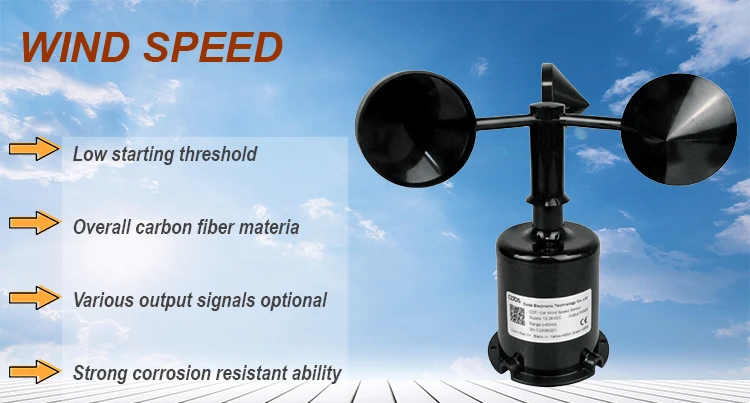
# Wind Direction Measuring Instrument
## Understanding Wind Direction Measurement
Wind direction is a crucial meteorological parameter that helps us understand weather patterns, predict storms, and optimize various industrial processes. A wind direction measuring instrument is specifically designed to determine the direction from which the wind is blowing.
## Types of Wind Direction Measuring Instruments
### 1. Wind Vanes
The most traditional and recognizable instrument for measuring wind direction is the wind vane. This simple yet effective device consists of an arrow or pointer that rotates freely on a vertical axis, always pointing into the wind.
### 2. Anemometers with Direction Sensors
Modern anemometers often incorporate wind direction sensors alongside their wind speed measurement capabilities. These typically use potentiometers or digital encoders to provide precise directional data.
### 3. Ultrasonic Wind Sensors
Advanced ultrasonic wind sensors measure both wind speed and direction by analyzing how ultrasonic pulses are affected by wind flow between transducers arranged in specific patterns.
## How Wind Direction Instruments Work
Wind direction instruments operate on several fundamental principles:
– Mechanical rotation (wind vanes)
– Electronic sensing (potentiometers, encoders)
– Ultrasonic time-of-flight measurements
– Laser-based detection systems
The direction is typically reported in degrees from true north (0° or 360°), with common compass points (N, NE, E, SE, etc.) often used for general reference.
## Applications of Wind Direction Measurement
Accurate wind direction measurement is essential in numerous fields:
- Meteorology and weather forecasting
- Aviation for airport operations
- Marine navigation and safety
- Wind energy production optimization
- Agricultural spraying operations
- Environmental monitoring
## Choosing the Right Instrument
When selecting a wind direction measuring instrument, consider these factors:
– Required accuracy and resolution
– Environmental conditions (temperature, humidity, corrosion potential)
– Maintenance requirements
– Output data format compatibility
– Power requirements
– Mounting options and height considerations
## Maintenance and Calibration
Regular maintenance ensures accurate wind direction measurements:
- Keep moving parts clean and lubricated
- Check for proper alignment with true north
- Inspect for physical damage or wear
- Perform periodic calibration checks
- Verify electrical connections in electronic models
## Future Developments in Wind Direction Measurement
Emerging technologies are improving wind direction measurement:
– Miniaturized MEMS sensors
– Improved digital signal processing
– Wireless data transmission
– Integration with IoT systems
– Enhanced durability for harsh environments
As technology advances, wind direction instruments continue to become more accurate, reliable, and accessible for various applications.
Keyword: instrument measure wind direction
Comments are closed